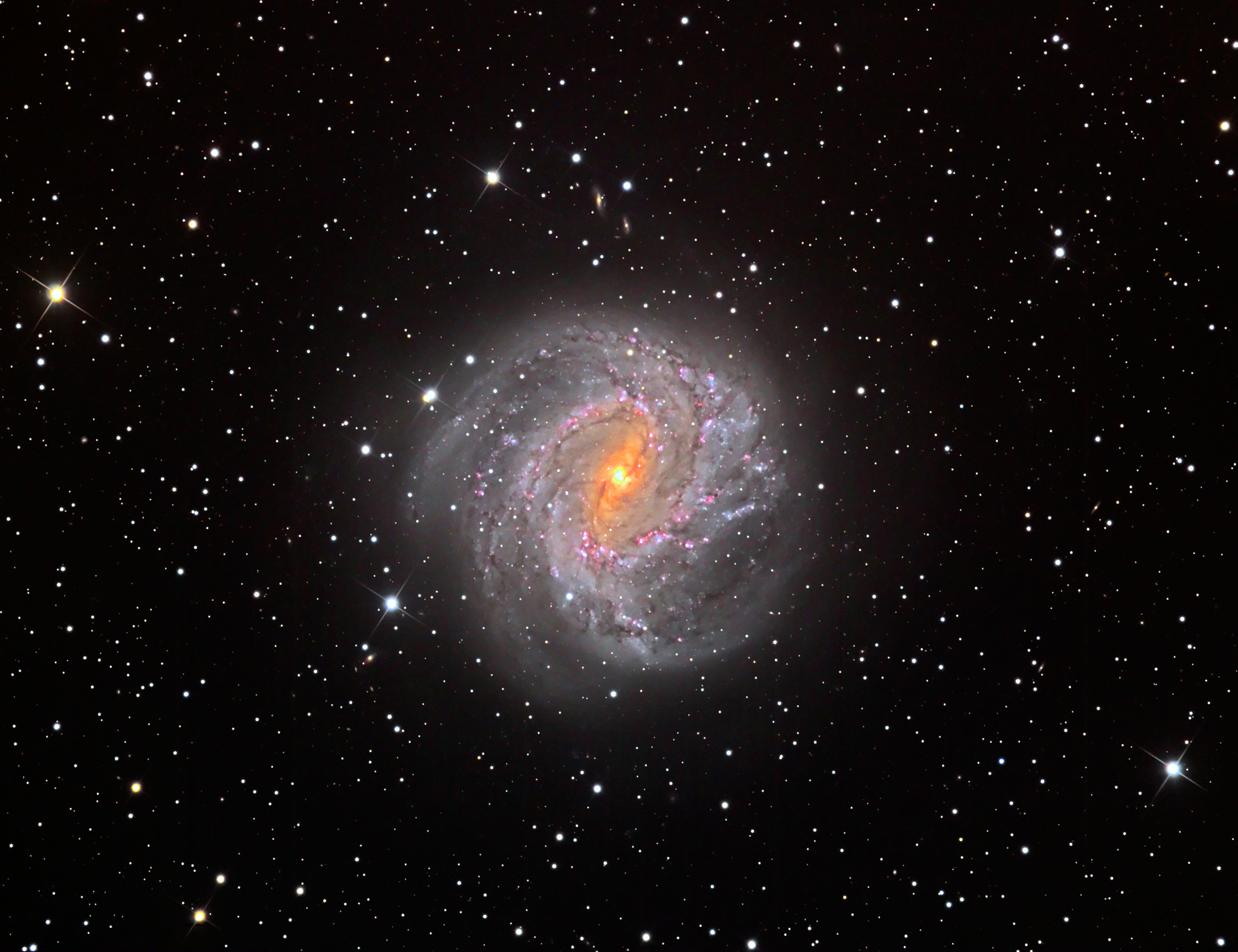
Spiral Galaxy M83
Fred Calvert / Cold Spring Observatory

Messier 83 is one of the most conspicuous spiral galaxies in the sky. Situated
in the constellation Hydra, it is the southernmost galaxy in Messier's catalog
and located approximately 15 million light years from Earth. Shining with the
light of billions of stars and the ruby red glow of hydrogen gas, it is a
beautiful example of a barred spiral galaxy
M83 stretches over 40 000 light-years across, making it
roughly 2.5 times smaller than our own Milky Way. However, in some respects,
Messier 83 is quite similar to our own galaxy. Both the Milky Way and Messier 83
possess a bar across their galactic nucleus, the dense spherical conglomeration
of stars seen at the centre of the galaxies.
Use of this remote telescope is available at http://www.lightbuckets.com